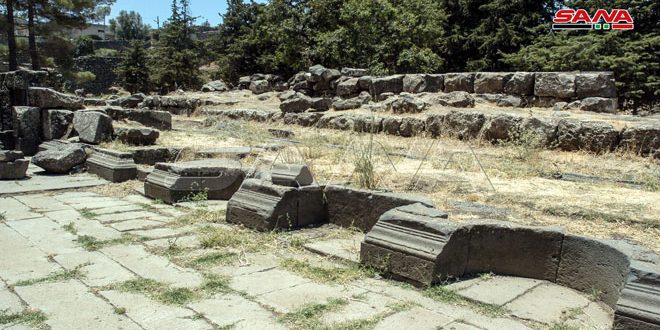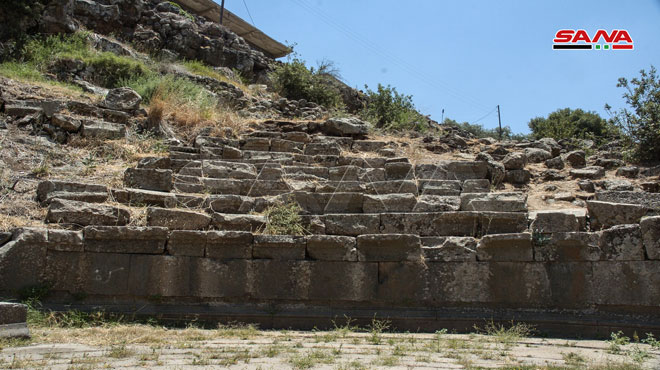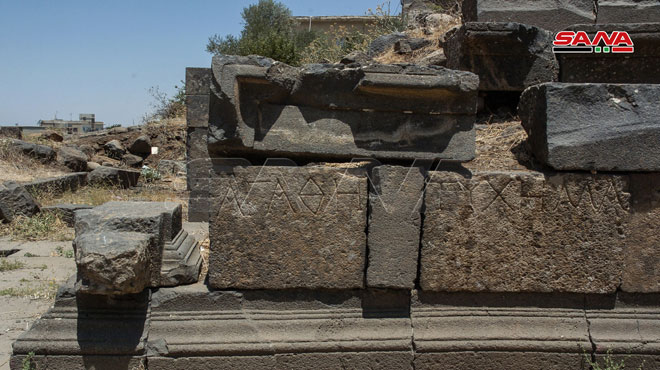In the town of Qanawat, located northeast of Sweida, the Odeon stands as a brilliant testament to the cultural and artistic role this city played during the Greek and Roman eras. Unlike the grand theaters dedicated to large-scale performances, the Odeon provided a more intimate space used for musical performances, lectures, and intellectual activities, reflecting the flourishing civic life of ancient Qanawat.
The Odeon was constructed from the region’s renowned hard basalt stone and can accommodate around 500 people, making it one of the smaller theaters but with a unique functional significance. Its streamlined design showcases the beauty of classical architecture, featuring semi-circular tiers that surround the stage, which once resonated with the voices of poets, musicians, and orators.
The theater is situated within the integrated architectural fabric of the ancient city, adjacent to temples and public buildings that all testify to Qanawat’s importance as a religious and cultural center during that era. The proximity of the Odeon to the Temple of the Water God and the Grand Theater in Qanawat suggests a blend of religious, social, and artistic functions in the daily life of the ancient city.
Despite parts of the structure having crumbled due to time and neglect, the site still retains its architectural allure and its ability to transport visitors back to a thriving city that valued words and melodies, granting art a status equal to that of politics and religion.
Documenting the Odeon in Qanawat today is more than just recording a stone monument; it is a revival of the memory of a city that spoke the languages of thought and music, embracing humanity in moments of reflection and enjoyment, away from the clamor of markets and the conflicts of empires.









